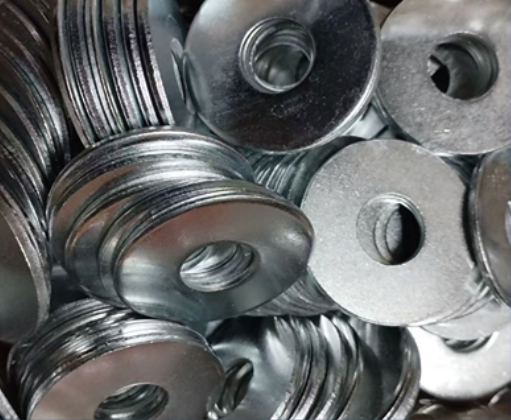Why Choosing the Right Stainless Steel Flat Cushion Matters for Your Project
Why Choosing the Right Stainless Steel Flat Cushion Matters for Your Project
Table of Contents
Introduction to Stainless Steel Flat Cushions
The Importance of Selecting the Right Flat Cushion
Types of Stainless Steel Flat Cushions
Material Composition
Size and Dimensions
Finishes and Coatings
Common Applications of Stainless St
May 08,2025

Why Choosing the Right Stainless Steel Flat Cushion Matters for Your Project
Table of Contents
- Introduction to Stainless Steel Flat Cushions
- The Importance of Selecting the Right Flat Cushion
- Types of Stainless Steel Flat Cushions
- Common Applications of Stainless Steel Flat Cushions
- Benefits of Using Stainless Steel Flat Cushions
- How to Choose the Right Stainless Steel Flat Cushion
- FAQs: Frequently Asked Questions
- Conclusion
Introduction to Stainless Steel Flat Cushions
Stainless steel flat cushions are essential components in various industrial applications, providing a stable surface for fastening and distributing loads. These cushions play a vital role in ensuring the longevity and reliability of mechanical assemblies. Understanding the significance of choosing the right stainless steel flat cushion can directly impact the success of your project.
The Importance of Selecting the Right Flat Cushion
Choosing the appropriate stainless steel flat cushion is not merely about aesthetics; it’s about functionality and performance. The right cushion ensures proper load distribution, reduces vibration, and minimizes the risk of damage to connected components. When you select the optimal flat cushion, you enhance the structural integrity of your project, leading to increased durability and efficiency.
Types of Stainless Steel Flat Cushions
When considering stainless steel flat cushions, it is essential to understand the various types available. Each type has unique characteristics that can significantly affect performance.
Material Composition
The material composition of stainless steel flat cushions is critical. Common grades include 304 and 316 stainless steel, each offering different benefits. Grade 304 is widely used due to its excellent corrosion resistance and formability, making it ideal for a broad range of applications. On the other hand, grade 316 provides superior resistance to pitting and crevice corrosion, especially in marine environments, making it a preferred choice for applications exposed to harsh conditions.
Size and Dimensions
The size and dimensions of flat cushions should be precisely matched to the components they will support. A well-fitting cushion ensures proper load distribution, reducing the risk of mechanical failure. Always consider the thickness, diameter, and shape of the cushion when making your selection. Custom sizes may be required for specific applications, emphasizing the need for accurate measurements.
Finishes and Coatings
Finishes and coatings can significantly impact the performance of stainless steel flat cushions. A polished finish not only enhances appearance but also improves corrosion resistance. Additionally, specific coatings can offer protection against wear and tear, making them suitable for high-friction applications. Understanding the environment in which the cushions will operate can guide the selection of the appropriate finish.
Common Applications of Stainless Steel Flat Cushions
Stainless steel flat cushions are utilized across various industries, including automotive, aerospace, construction, and manufacturing. They are integral in applications such as:
- **Machinery Assembly**: Flat cushions are often used to secure machinery components, ensuring stability and alignment.
- **Structural Support**: In construction, they provide support in structures, helping to distribute loads evenly.
- **Electronics**: In electronic equipment, they minimize vibration and protect sensitive components from damage.
- **Marine Applications**: Their corrosion-resistant properties make them ideal for use in shipbuilding and other marine environments.
Benefits of Using Stainless Steel Flat Cushions
Opting for stainless steel flat cushions offers numerous benefits:
1. **Durability**: Stainless steel is resistant to rust and corrosion, ensuring long-lasting performance in various environments.
2. **Load Distribution**: Flat cushions effectively distribute loads, reducing stress on connected components and minimizing the risk of failure.
3. **Vibration Damping**: They play a crucial role in damping vibrations, which is essential in machinery to enhance longevity and performance.
4. **Ease of Installation**: Stainless steel flat cushions are easy to install and can often be integrated into existing systems without significant modifications.
5. **Aesthetic Appeal**: Their polished, clean appearance adds a professional touch to any project.
How to Choose the Right Stainless Steel Flat Cushion
Selecting the right stainless steel flat cushion involves several steps:
1. **Assess Your Needs**: Identify the specific requirements of your project. Consider factors like load capacity, environmental exposure, and compatibility with other materials.
2. **Material Selection**: Choose the appropriate grade of stainless steel based on the application. For instance, if the cushion will be exposed to moisture, grade 316 may be the best option.
3. **Size Matters**: Measure the components accurately to ensure a proper fit. A well-fitted cushion will provide optimal performance.
4. **Consider Finish and Coatings**: Evaluate whether specific finishes or coatings are necessary based on the operational environment.
5. **Consult Experts**: If uncertain, consult with suppliers or engineers who can provide insights and recommendations tailored to your project needs.
FAQs: Frequently Asked Questions
1. What is the primary function of a stainless steel flat cushion?
The primary function of a stainless steel flat cushion is to provide a stable, load-distributing surface that reduces stress on connected components, thereby enhancing the overall integrity of mechanical assemblies.
2. How do I determine the correct size for a flat cushion?
To determine the correct size, measure the components where the cushion will be installed. Ensure that the cushion's diameter and thickness match the requirements for optimal load distribution and stability.
3. Can stainless steel flat cushions be used in high-temperature applications?
Yes, certain grades of stainless steel, such as 310, are designed for high-temperature applications. However, it is essential to assess the specific requirements of your application to choose the most suitable material.
4. Do stainless steel flat cushions require any maintenance?
Generally, stainless steel flat cushions require minimal maintenance. Regular inspections can help identify any wear or corrosion, especially in harsh environments.
5. What advantages do stainless steel flat cushions have over other materials?
Stainless steel flat cushions offer superior corrosion resistance, enhanced durability, excellent load distribution, and the ability to withstand various environmental conditions, making them more advantageous than cushions made from plastic or carbon steel.
Conclusion
In conclusion, choosing the right stainless steel flat cushion is essential for the success and durability of your projects. By understanding the various types, applications, and benefits, you can make informed decisions that enhance the performance of your assemblies. A well-selected flat cushion not only improves load distribution and vibration damping but also contributes to the overall longevity of your project. As you embark on your next endeavor, prioritize the selection of high-quality stainless steel flat cushions to ensure optimal outcomes.

 中文版
中文版 English
English Русский
Русский عربي
عربي





